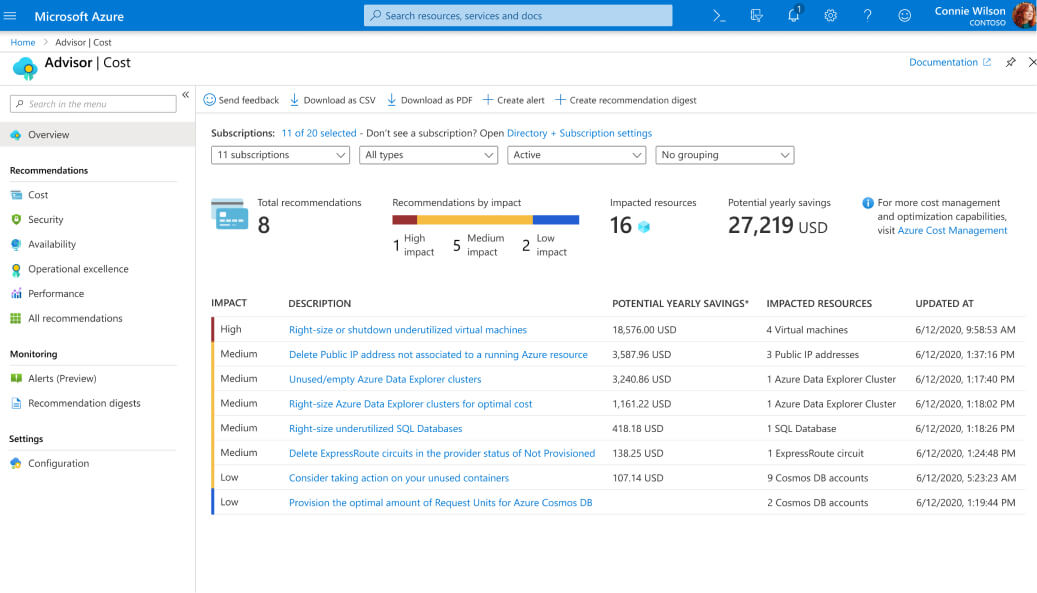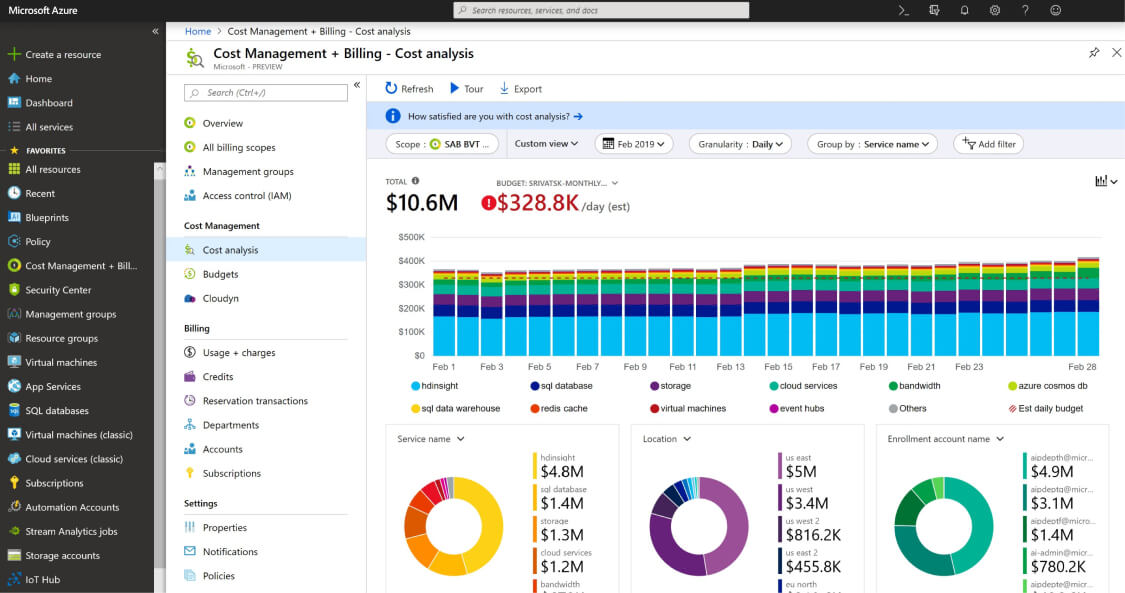Cloud technologies are being adopted by an increasing number of companies as Microsoft Azure advancements continue. One thing to be wary of is the multiplying costs of cloud when using several features. Companies may be in for a shock at the end of the month when they find unexpected costs against their usage. We explore the options for Azure cost management below.
Move workloads to containers
If your application runs on VMs, you can cut down on cloud hosting costs by moving it to containers. One example of this is having several WordPress servers which run individually on separate Azure VMs. Using Azure Kubernetes Service (AKS), the servers can be deployed as containers, spreading the instances across a few VMs. As AKS pricing per host is similar to Azure VM hosting, you could save a lot of money. An optional Uptime Guarantee is also offered by AKS.
Azure cost management recommendations
Microsoft Azure has included tools to help organisations with Azure cost management.
Azure Pricing Calculator shows total cost of an intended workload on Azure, granting the ability to anticipate costs. Azure cost analysis shows how much each workload will cost as they are running within Azure. It also shows future costs based on any current configurations.
Azure budgets will alert Azure users when spending thresholds have been met. Finally, Azure Advisor helps to provide cost optimisation recommendations by identifying idle and underutilised resources. Actionable changes based on each impact are shown to quickly change settings and reduce spend.
Switch to serverless
The Azure Functions service offers cost savings through serverless computing. With this option, software runs on demand, when requested by users. When the software is not running, the organisation will not be charged.
Serverless computing benefits compute-intensive workloads that can be paused. This is more cost-effective than having a VM run indefinitely, regardless of whether it’s being used or not.
The right server location
By choosing the right cloud region, your workloads will be hosted, physically, in that geographical area. Azure’s pricing options vary depending on location, so check the map of servers and costs before deciding.
Currently, many US servers are among the cheapest with a few European locations also being very affordable. Companies can save money by choosing to place their workloads in these regions but need to consider their user base too. If users are based far from the selected Azure server, they can experience high network latency. This would result in a negative experience for them so we recommend balancing cost with convenience.
Azure payment options
Azure offers different VM payments depending on the client’s requirements.
On-demand/Pay-as-you-go: On-demand means the ability to launch VMs instantly, hence it is the most expensive option. Though, it does offer flexibility and convenience as companies can run instances without interruption.
Spot: Spot allows organisations to buy spare Azure compute capacity for much cheaper than On-demand. Savings can be up to 90% but the catch is that Microsoft can terminate a Spot instance depending on capacity demands. This option is best for workloads that don’t require constant running.
Reserved: VM instances can be reserve for one or three-year periods. This means savings of up to 72% compared to On-demand pricing.



